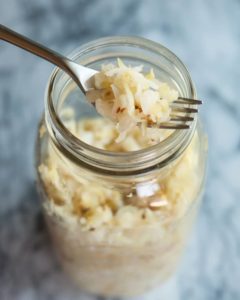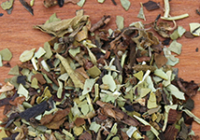 Before we had refrigerators and freezers foods were successfully preserved by lactic acid fermentaiton. Lactic acid fermentation is a natural process. Under specific conditions (water and oxygen deprivation), ever-present lactic acid bacteria convert carbohydrates contained by the foods to lactic acid and thus create vital energy, ensure preservation, and retain the flavor as well as high vitamin and enzyme contents with probiotic properties. Read more about Internal Regeneration and Physical Strength through Lactic Acid.
Before we had refrigerators and freezers foods were successfully preserved by lactic acid fermentaiton. Lactic acid fermentation is a natural process. Under specific conditions (water and oxygen deprivation), ever-present lactic acid bacteria convert carbohydrates contained by the foods to lactic acid and thus create vital energy, ensure preservation, and retain the flavor as well as high vitamin and enzyme contents with probiotic properties. Read more about Internal Regeneration and Physical Strength through Lactic Acid.

Ingredients:
1 small head organic green cabbage (cored and finely shredded)
1 tablespoon sea salt
Instructions:
1. Toss cabbage and sea salt in a large mixing bowl. Use a wooden spoon (or your hands, washed!) to press the cabbage and salt mixture so that the cabbage becomes limp and releases its juice.
2. Pack the salted cabbage into a sterilized quart-sized widemouth jar as tightly as you can, adding the mixture to the container in 1-inch layers, eliminating air bubbles using the wooden spoon.
3. Continue packing the cabbage into the container until the cabbage is completely submerged by liquid and there is approximately 1-inch of headspace.
4. Cover the jar with a clean cloth secured by an elastic band and leave undisturbed in a dark, cool location (between 60 – 75 degrees) for 3 – 7 days, testing the mixture daily. When it is done to your liking, you may eat it – or replace cloth with a sterilized lid and store in the refrigerator for up to one month.
Note: Once you have made this easy sauerkraut recipe, you can experiment by adding your favorite seasonings and vegetables. For example, onions, green apple, garlic, hot pepper, ginger and caraway seeds are common tasty additions to sauerkraut.










